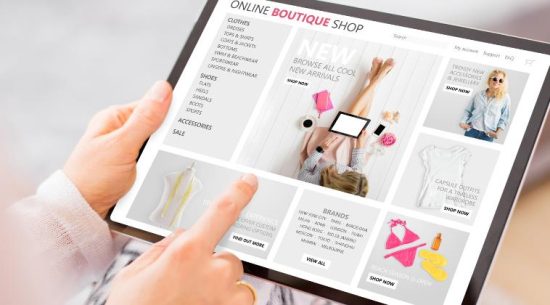
Starting an online boutique in the US is an exciting venture, but it comes with challenges. This blog provides a step-by-step process for how to start an online boutique, insights from successful boutique owners, and expert advice to help you navigate the e-commerce and fashion retail landscape. Whether you’re a fashion enthusiast or an aspiring entrepreneur, this journey will equip you with the tools to thrive in the competitive fashion industry. Get ready to share your unique style with the world and embark on a path to online retail success!
How to Start an Online Boutique in the US
1. Choose a Niche You’re Passionate About
When starting an online boutique, choose a niche aligned with your passions. This alignment will fuel your dedication and increase the likelihood of success, as you’ll enjoy the work and be more motivated to make your boutique thrive.

When selecting a niche for your online boutique, consider the following:
- Identify your interests and hobbies that you’re truly passionate about.
- Research the market demand and competition in those niches.
- Consider the profitability and sustainability of the niche.
- Think about how you can differentiate your boutique and offer unique value to your customers within that niche.
2. Identify Market Gaps
Thorough market research is essential for online boutique success. It helps identify market gaps, unmet customer needs, and underserved segments, enabling your boutique to flourish. Understand your audience, analyze competitors, and differentiate your boutique to offer unique value. By identifying gaps and offering distinct value, your boutique can seize untapped opportunities and meet customer needs effectively.
3. Plan Your Business Strategy
Creating a Business Plan for Your Online Boutique
Developing a solid business strategy for your online boutique is crucial. Start by creating a detailed business plan outlining goals, target market, marketing strategies, financial projections, and operational plans. Consider pricing, product sourcing, branding, and customer acquisition. Regularly review and update your plan to adapt to changing market conditions and customer preferences, positioning your boutique for long-term success. You can also check for the business loans, apt for your business.
4. Develop Your Products
To run a successful online boutique, prioritize quality and uniqueness in your product selection. Conduct thorough research to understand your niche and target market, ensuring your offerings align with their preferences and needs. Consider dropshipping, working with manufacturers, or creating your own products to diversify your catalog. Stay updated on industry trends and customer preferences to continuously improve your product lineup. Focus on excellence in product development to attract and retain customers, setting your boutique apart from competitors.
5. Build Your Brand

Establishing a strong brand identity is critical for your online boutique’s success, setting you apart from competitors and fostering customer loyalty. Define your brand’s unique identity, values, and mission to guide your branding decisions. Choose a memorable and meaningful brand name and design a distinctive logo and visual assets that reflect your brand’s personality. Consistently communicate your brand messaging across all channels to reinforce your brand identity and build customer recognition. Continuously evaluate and refine your branding strategy to stay relevant and resonant with your target audience.
6. Price Your Products
Setting Competitive and Profitable Pricing for Your Online Boutique
Setting the right prices for your online boutique requires balancing competitiveness and profitability. Consider your product costs, competitor prices, and target market’s preferences. Avoid undervaluing your products, and regularly review and adjust your pricing strategy based on market conditions and customer feedback. Experimentation and adaptability are key to finding the right pricing strategy for your business.
7. Create Your Online Store
Creating a user-friendly online store is essential for your boutique’s success. Choose a reliable ecommerce platform with customizable templates and secure payment options. Design your website for easy navigation and optimize it for mobile devices. Regularly update and optimize your store based on analytics to enhance the user experience and increase sales.
8. Utilize Social Selling and Sales Channels
In today’s digital age, social media platforms and online sales channels provide a valuable opportunity for online boutiques to expand their reach and attract customers. By effectively leveraging social media and utilizing various online sales channels, you can enhance the visibility of your brand and drive sales.
Leveraging Social Media for Your Online Boutique
Social media platforms such as Instagram, Facebook, Pinterest, and Twitter are powerful tools for connecting with your target audience and building a strong online presence. To effectively leverage social media for your online boutique, consider the following strategies:
- Create engaging content: Post high-quality images and compelling product descriptions to showcase your merchandise and capture the attention of potential customers.
- Build a strong social media presence: Regularly share posts, interact with your followers, and respond to comments and messages. Establish yourself as a trustworthy and reliable brand.
- Leverage influencer partnerships: Collaborate with social media influencers and bloggers in your niche to expand your reach and tap into their engaged audience.
- Use relevant hashtags: Incorporate popular and niche-specific hashtags in your posts to increase your visibility and attract users who are interested in your products.
Online Sales Channels for Your Boutique

In addition to social media, consider expanding your online boutique presence by utilizing various sales channels:
- Popular online marketplaces: Explore selling your products on platforms like Amazon, eBay, Etsy, or Shopify to reach a wider customer base and benefit from their established traffic.
- Collaborate with other online retailers: Partner with complementary brands or retailers to cross-promote each other’s products and tap into their customer base.
- Host live online sales events: Conduct live sales events through platforms like Facebook Live, Instagram Live, or YouTube to engage with your audience and offer exclusive deals.
- Offer exclusive promotions: Provide special discounts or promotions for customers who purchase through specific online sales channels to incentivize sales.
By staying active on social media, engaging with your audience, and diversifying your online sales channels, you can effectively utilize social selling and expand the reach of your online boutique.
9. Develop a Shipping Strategy
Once you have developed a solid foundation for your online boutique, it’s time to focus on marketing and promotion to drive brand awareness and attract customers. Without effective marketing strategies, your boutique might go unnoticed in the vast digital landscape. This section outlines essential marketing tactics to help you stand out from the competition and reach your target audience.
Driving Brand Awareness and Customer Acquisition for Your Online Boutique
Implement a comprehensive marketing and promotion strategy to maximize your boutique’s visibility and generate sales.
Here are some key steps to consider:
- Utilize Search Engine Optimization (SEO): Optimize your website and product pages with relevant keywords and meta tags to improve your search engine rankings. This will help potential customers find your boutique when they search for related products.
- Leverage Social Media Marketing: Create engaging content and maintain a strong presence on popular social media platforms such as Instagram, Facebook, and Pinterest. Share visually appealing images of your products, collaborate with influencers in your niche, and engage with your audience regularly.
- Implement Email Marketing: Build an email list of potential customers and reach out to them with personalized offers, new arrivals, and exclusive promotions. Craft compelling and attention-grabbing email content to entice recipients to visit your boutique and make a purchase.
- Create High-Quality Content: Develop a blog section on your website where you can provide valuable information, tips, and tutorials related to your niche. This not only helps establish your expertise but also attracts organic traffic from search engines.
- Collaborate with Influencers and Bloggers: Partner with influential personalities and popular bloggers in your industry to promote your boutique. Their endorsement and recommendations can significantly increase brand awareness and attract new customers.
- Offer Promotions and Discounts: Use limited-time discounts, flash sales, and special offers to create a sense of urgency and encourage customers to make a purchase. Communicate these promotions through your website, social media channels, and email marketing campaigns.
10. Implement Marketing and Promotion

Driving Brand Awareness and Customer Acquisition for Your Online Boutique
To ensure your online boutique’s success, implement a comprehensive marketing strategy. Use SEO to improve visibility in search results, leverage social media advertising to reach your target audience, and engage in email marketing to nurture customer relationships. Create valuable content to establish authority in your niche and collaborate with influencers to expand your reach. Regularly analyze performance data and optimize your strategy for maximum impact.
FAQs on Starting Online Boutique
How much does it cost to start a boutique?
The cost of starting a boutique can vary depending on various factors such as the scale of the business, location, inventory size, marketing strategy, and more. While it is possible to start a boutique on a budget, it’s important to consider expenses such as sourcing or creating products, website development, marketing efforts, shipping supplies, and operational expenses. It is advisable to create a detailed budget as part of your business plan to understand and manage your costs effectively.
How to start a boutique business from home?
Starting a boutique business from home requires careful planning and organization. Begin by choosing a niche that aligns with your interests and target market. Conduct market research to identify gaps and opportunities in the market. Develop a business plan that outlines your goals, strategies, and financial projections. Source or create high-quality products that appeal to your target customers. Build a strong online presence through social media and an attractive website. Implement an efficient shipping strategy and implement marketing efforts to drive sales and brand awareness.
How much inventory should I start with an online boutique?
The amount of inventory you should start with in an online boutique will depend on various factors such as your budget, target market, and the type of products you offer. It’s recommended to start with a selection of carefully curated products that showcase your brand and provide variety to your customers. As your business grows, you can gradually expand your inventory and introduce new products based on customer demand and market trends. It’s important to strike a balance between having enough inventory to meet customer needs without overstocking and tying up your capital.






